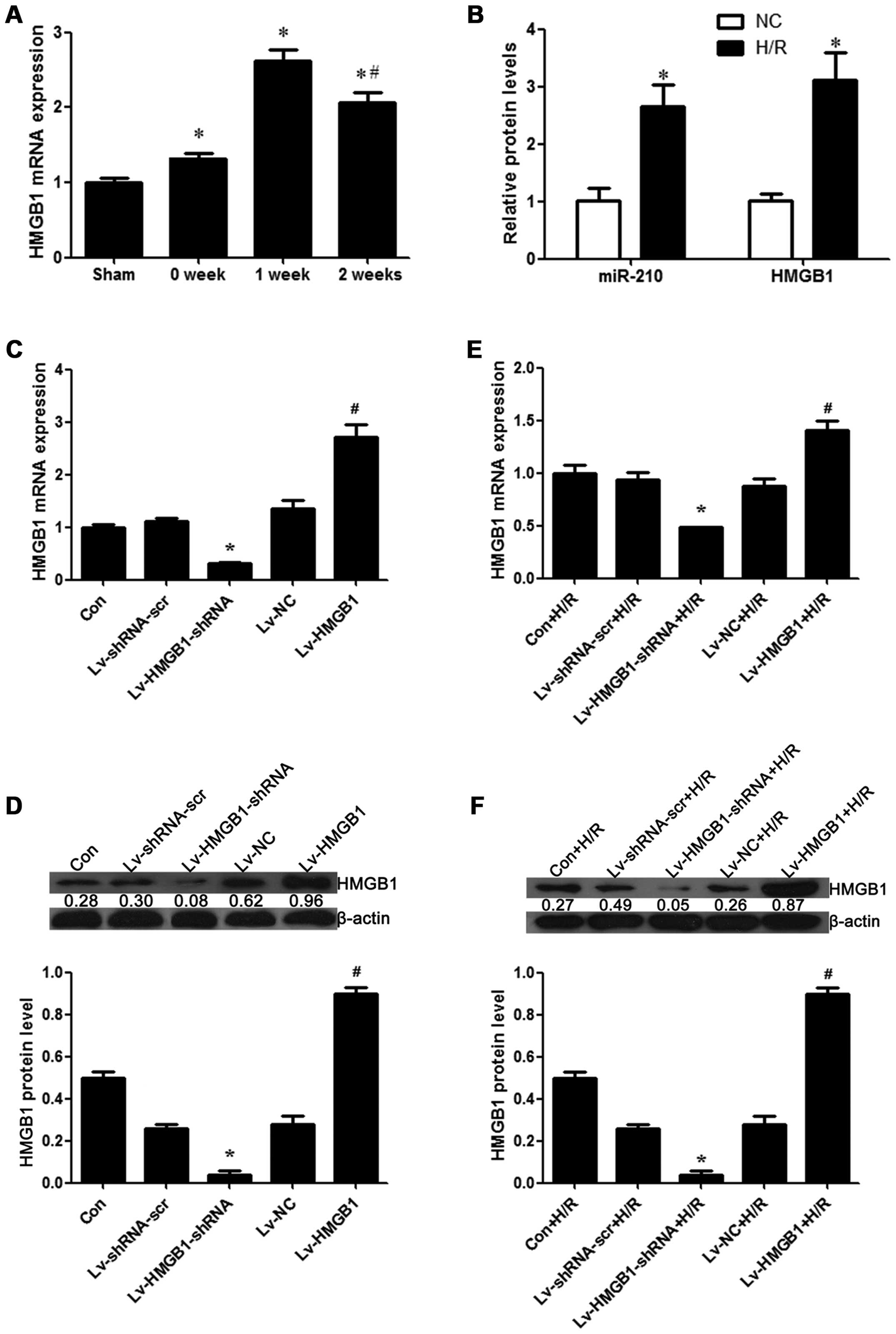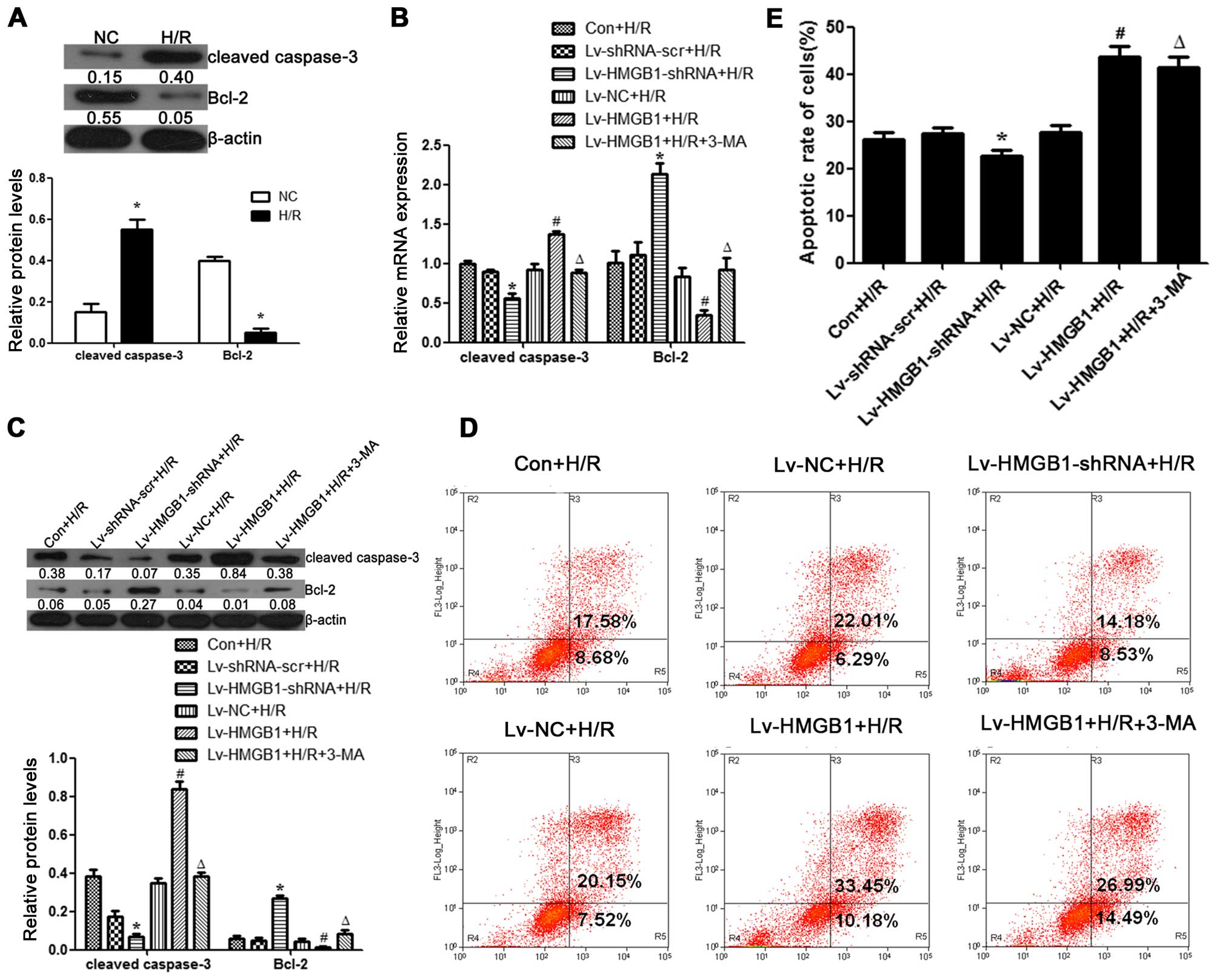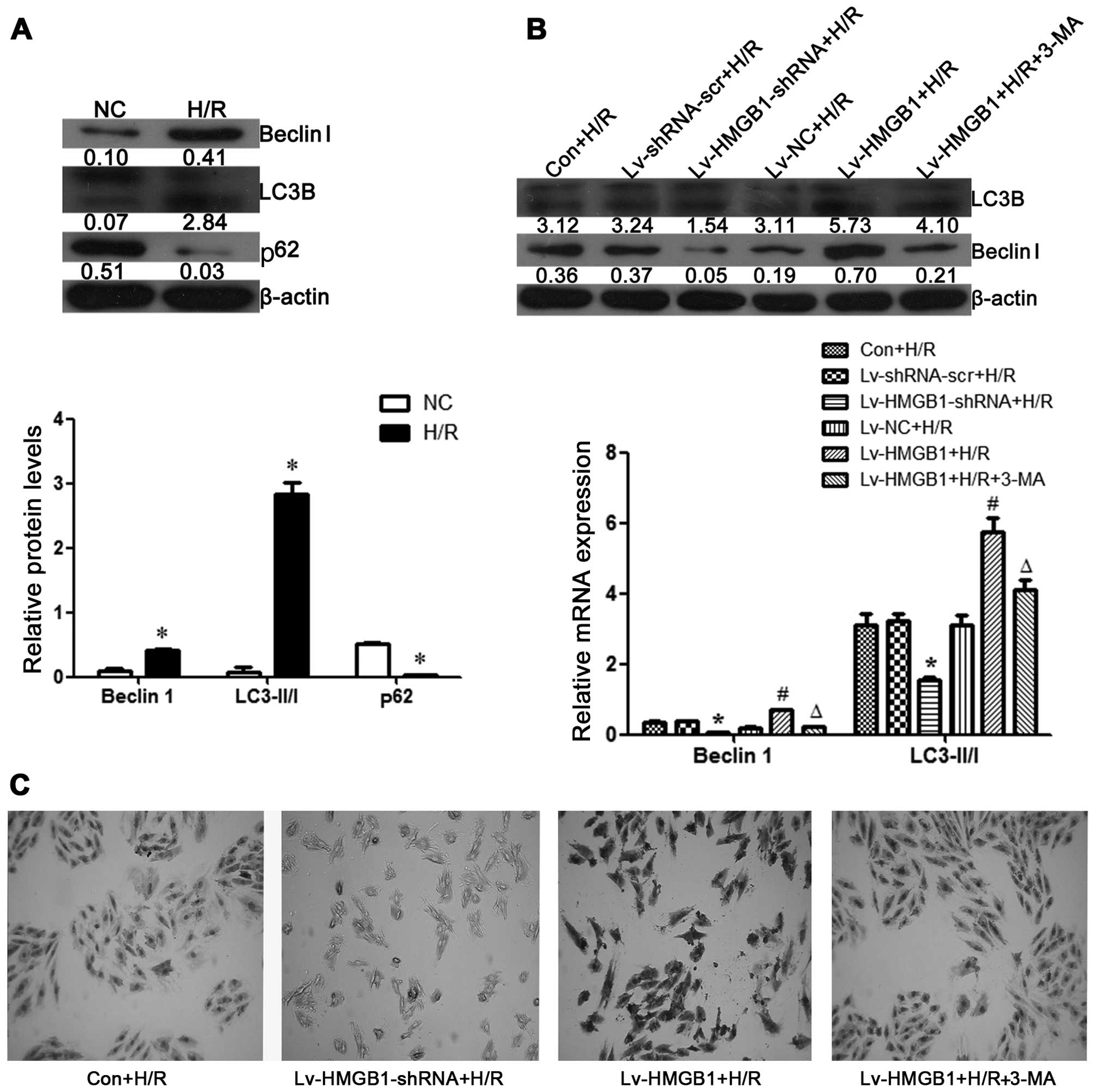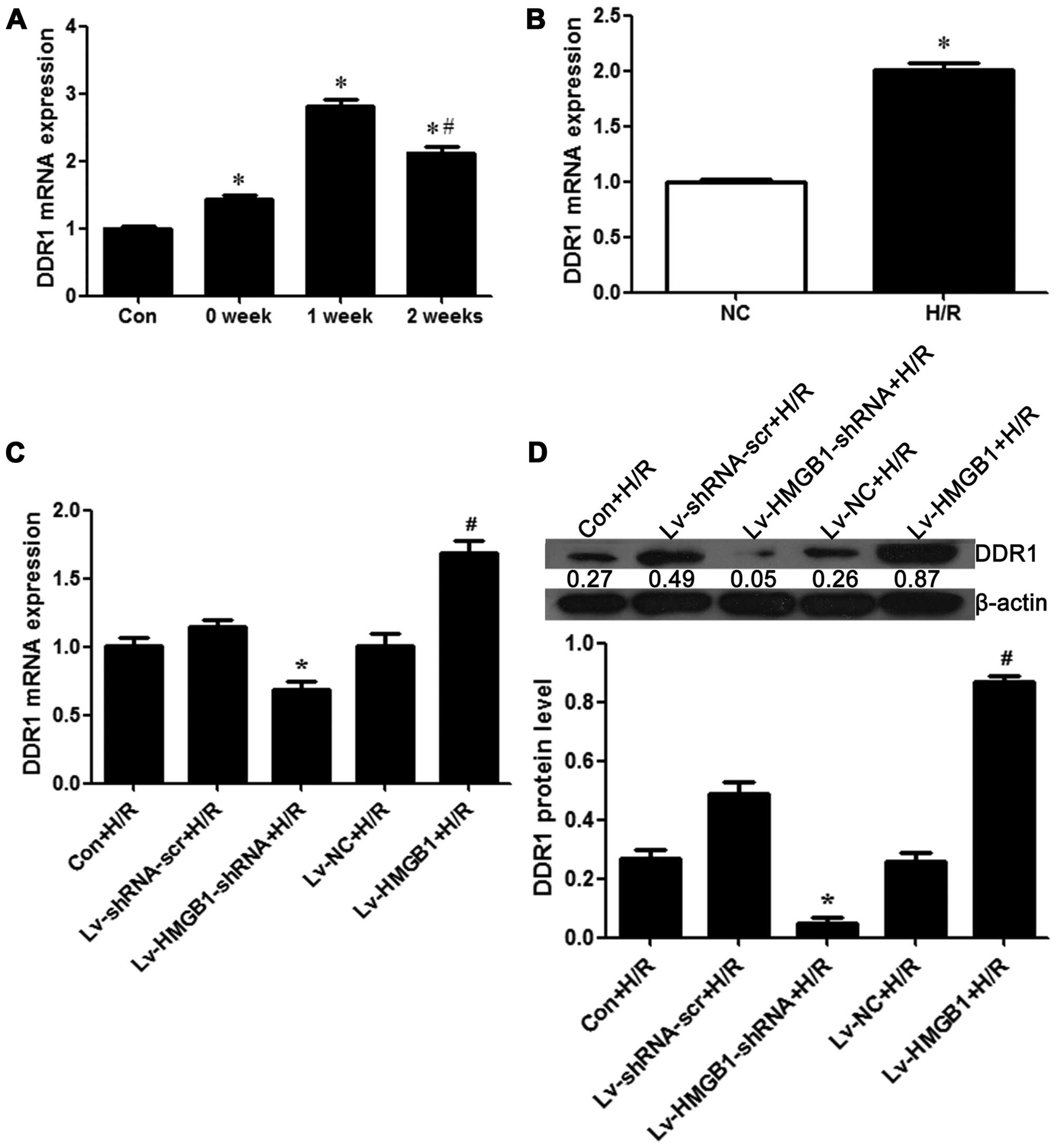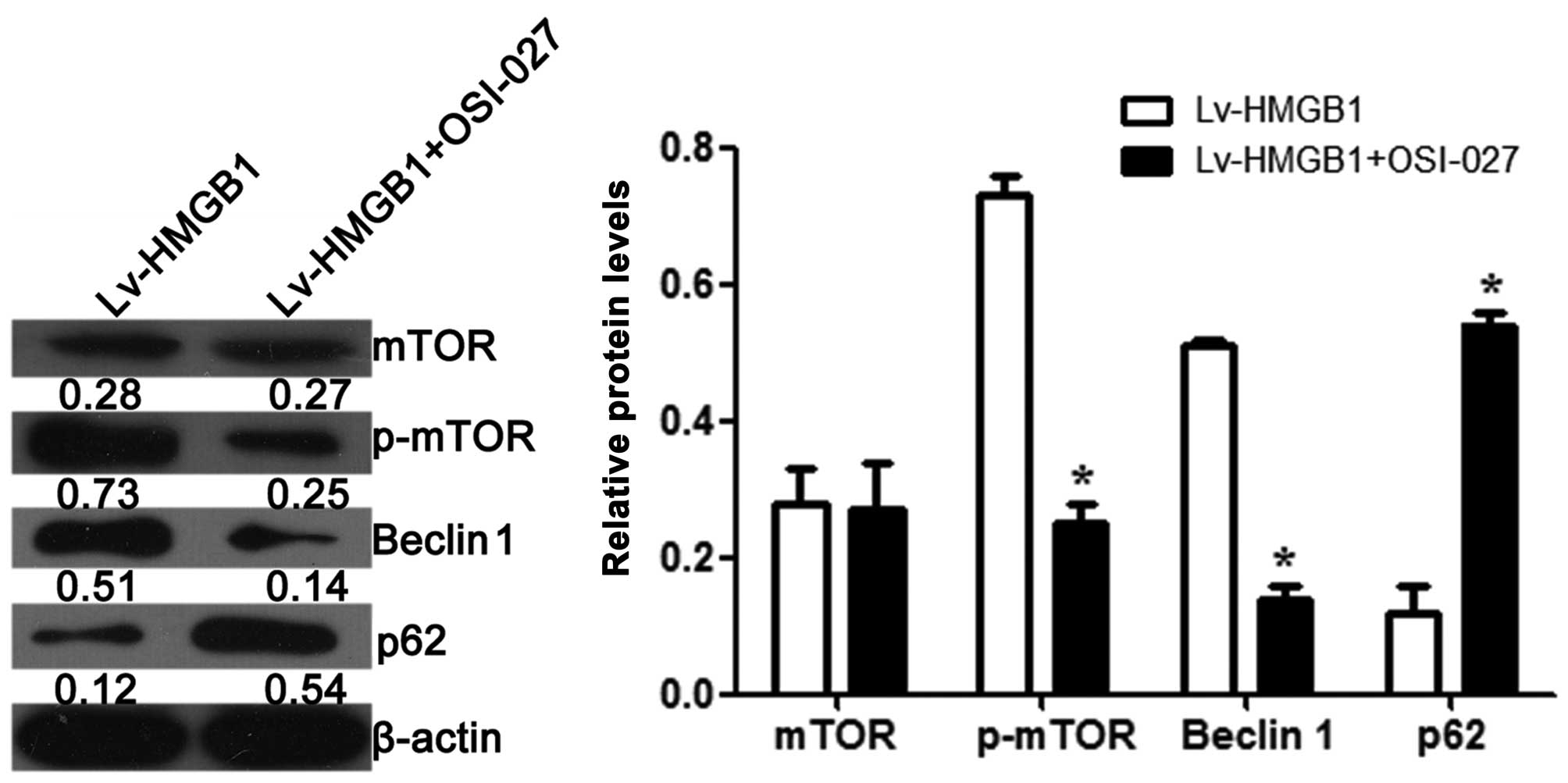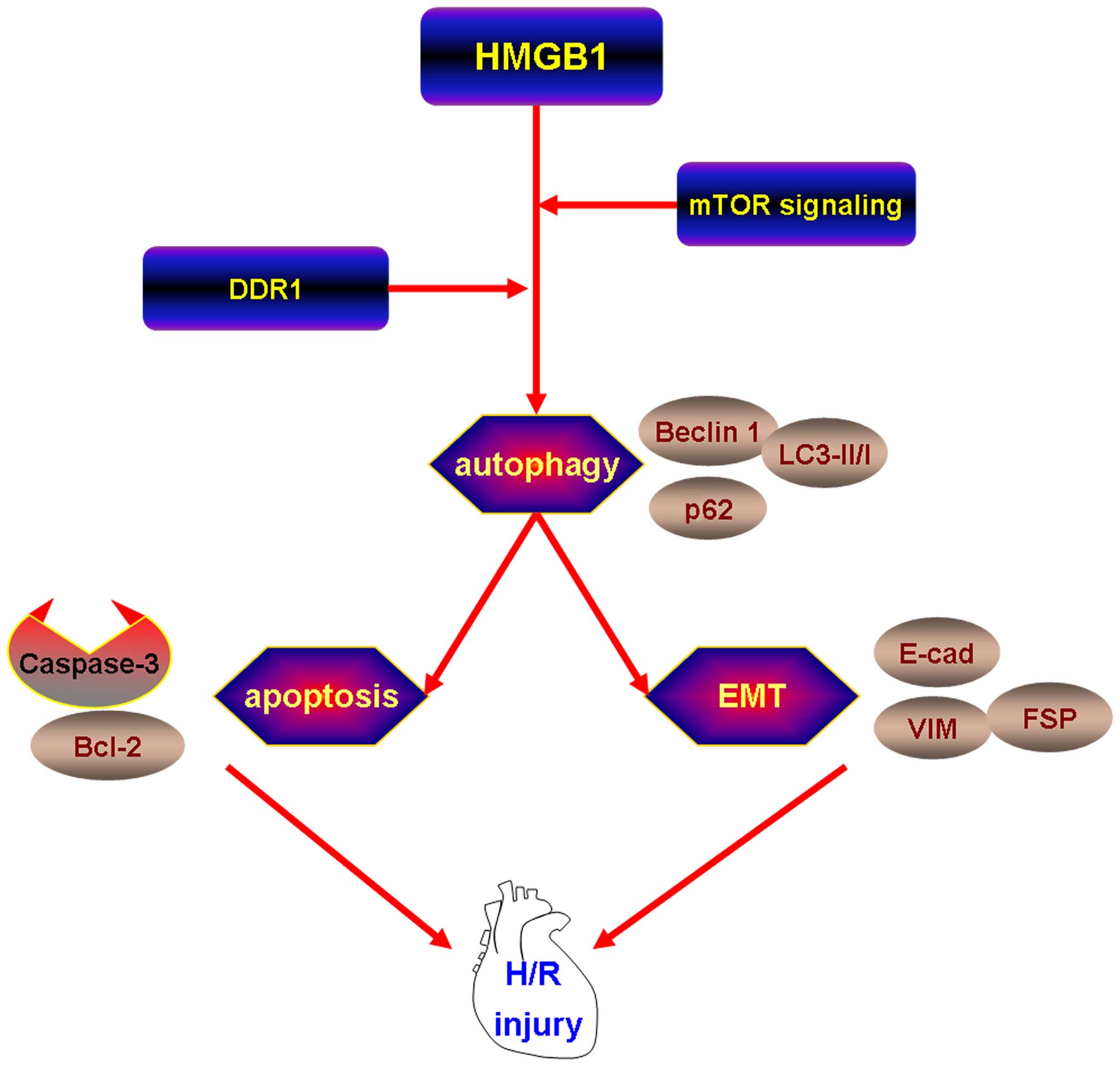|
1
|
Aydin S, Kuloglu T, Aydin S, Kalayci M,
Yilmaz M, Çakmak T and Eren MN: Elevated adropin: A candidate
diagnostic marker for myocardial infarction in conjunction with
troponin-I. Peptides. 58:91–97. 2014. View Article : Google Scholar : PubMed/NCBI
|
|
2
|
Cabello JB, Burls A, Emparanza JI, Bayliss
S and Quinn T: Oxygen therapy for acute myocardial infarction.
Cochrane Database Syst Rev. 8:CD0071602013.PubMed/NCBI
|
|
3
|
Anderson JL, Adams CD, Antman EM, Bridges
CR, Califf RM, Casey DE Jr, Chavey WE II, Fesmire FM, Hochman JS,
Levin TN, et al American College of Cardiology Foundation/American
Heart Association Task Force on Practice Guidelines: 2012 ACCF/AHA
focused update incorporated into the ACCF/AHA 2007 guidelines for
the management of patients with unstable angina/non-ST-elevation
myocardial infarction: A report of the American College of
Cardiology Foundation/American Heart Association Task Force on
Practice Guidelines. Circulation. 127:e663–e828. 2013. View Article : Google Scholar : PubMed/NCBI
|
|
4
|
Brown HF: Synopsis and Review of the
American College of Cardiology Foundation/American Heart
Association 2013 ST-Elevation Myocardial Infarction Guideline. AACN
Adv Crit Care. 25:142–150. 2014. View Article : Google Scholar : PubMed/NCBI
|
|
5
|
Mitra A, Ray A, Datta R, Sengupta S and
Sarkar S: Cardioprotective role of p38 MAPK during myocardial
infarction via parallel activation of α-crystallin B and Nrf2. J
Cell Physiol. 229:1272–1282. 2014. View Article : Google Scholar : PubMed/NCBI
|
|
6
|
Sahoo S and Losordo DW: Exosomes and
cardiac repair after myocardial infarction. Circ Res. 114:333–344.
2014. View Article : Google Scholar : PubMed/NCBI
|
|
7
|
Gai Y, Ma Z, Yu X, Qu S and Sui D: Effect
of ginsenoside Rh1 on myocardial injury and heart function in
isoproterenol-induced cardiotoxicity in rats. Toxicol Mech Methods.
22:584–591. 2012. View Article : Google Scholar : PubMed/NCBI
|
|
8
|
Go AS, Mozaffarian D, Roger VL, Benjamin
EJ, Berry JD, Borden WB, Bravata DM, Dai S, Ford ES, Fox CS, et al
American Heart Association Statistics Committee and Stroke
Statistics Subcommittee: Heart disease and stroke statistics - 2013
update: A report from the American Heart Association. Circulation.
127:e6–e245. 2013. View Article : Google Scholar
|
|
9
|
Cao X, Chen A, Yang P, Song X, Liu Y, Li
Z, Wang X, Wang L and Li Y: Alpha-lipoic acid protects
cardiomyocytes against hypoxia/reoxygenation injury by inhibiting
autophagy. Biochem Biophys Res Commun. 441:935–940. 2013.
View Article : Google Scholar : PubMed/NCBI
|
|
10
|
Verma S, Fedak PW, Weisel RD, Butany J,
Rao V, Maitland A, Li RK, Dhillon B and Yau TM: Fundamentals of
reperfusion injury for the clinical cardiologist. Circulation.
105:2332–2336. 2002. View Article : Google Scholar : PubMed/NCBI
|
|
11
|
Feng Y, Hu L, Xu Q, Yuan H, Ba L, He Y and
Che H: Cytoprotective role of alpha1-antitrypsin in vascular
endothelial cell under hypoxia/reoxygenation condition. J
Cardiovasc Pharmacol. 66:96–107. 2015. View Article : Google Scholar : PubMed/NCBI
|
|
12
|
Cao X, Wang X, Ling Y, Song X, Yang P, Liu
Y, Liu L, Wang L, Guo J and Chen A: Comparison of the degree of
autophagy in neonatal rat cardiomyocytes and H9c2 cells exposed to
hypoxia/reoxygenation. Clin Lab. 60:809–814. 2014.PubMed/NCBI
|
|
13
|
Zhang Y, Hu S and Chen Y: Hepatocyte
growth factor suppresses hypoxia/reoxygenation-induced XO
activation in cardiac microvascular endothelial cells. Heart
Vessels. 2014.
|
|
14
|
Hock R, Furusawa T, Ueda T and Bustin M:
HMG chromosomal proteins in development and disease. Trends Cell
Biol. 17:72–79. 2007. View Article : Google Scholar
|
|
15
|
Zhao X, Kuja-Panula J, Rouhiainen A, Chen
YC, Panula P and Rauvala H: High mobility group box-1 (HMGB1;
amphoterin) is required for zebrafish brain development. J Biol
Chem. 286:23200–23213. 2011. View Article : Google Scholar : PubMed/NCBI
|
|
16
|
Rauvala H and Rouhiainen A: Physiological
and pathophysiological outcomes of the interactions of HMGB1 with
cell surface receptors. Biochim Biophys Acta. 1799:164–170. 2010.
View Article : Google Scholar
|
|
17
|
Stros M: HMGB proteins: Interactions with
DNA and chromatin. Biochim Biophys Acta. 1799:101–113. 2010.
View Article : Google Scholar : PubMed/NCBI
|
|
18
|
Zhou X, Hu X, Xie J, Xu C, Xu W and Jiang
H: Exogenous high-mobility group box 1 protein injection improves
cardiac function after myocardial infarction: Involvement of Wnt
signaling activation. J Biomed Biotechnol. 2012:7438792012.
View Article : Google Scholar : PubMed/NCBI
|
|
19
|
Nakamura Y, Suzuki S, Shimizu T, Miyata M,
Shishido T, Ikeda K, Saitoh S, Kubota I and Takeishi Y: High
mobility group box 1 promotes angiogenesis from bone marrow-derived
endothelial progenitor cells after myocardial infarction. J
Atheroscler Thromb. 22:570–581. 2015. View Article : Google Scholar : PubMed/NCBI
|
|
20
|
He YY, Wen Y, Zheng XX and Jiang XJ:
Intramyocardial delivery of HMGB1 by a novel thermosensitive
hydrogel attenuates cardiac remodeling and improves cardiac
function after myocardial infarction. J Cardiovasc Pharmacol.
61:283–290. 2013. View Article : Google Scholar
|
|
21
|
Andrassy M, Volz HC, Riedle N, Gitsioudis
G, Seidel C, Laohachewin D, Zankl AR, Kaya Z, Bierhaus A,
Giannitsis E, et al: HMGB1 as a predictor of infarct transmurality
and functional recovery in patients with myocardial infarction. J
Intern Med. 270:245–253. 2011. View Article : Google Scholar : PubMed/NCBI
|
|
22
|
Xu W, Jiang H, Hu X and Fu W: Effects of
high-mobility group box 1 on the expression of Beclin-1 and LC3
proteins following hypoxia and reoxygenation injury in rat
cardiomyocytes. Int J Clin Exp Med. 7:5353–5357. 2014.
|
|
23
|
Tang D, Kang R, Livesey KM, Cheh CW,
Farkas A, Loughran P, Hoppe G, Bianchi ME, Tracey KJ, Zeh HJ III,
et al: Endogenous HMGB1 regulates autophagy. J Cell Biol.
190:881–892. 2010. View Article : Google Scholar : PubMed/NCBI
|
|
24
|
Kang R, Livesey KM, Zeh HJ III, Lotze MT
and Tang D: HMGB1 as an autophagy sensor in oxidative stress.
Autophagy. 7:904–906. 2011. View Article : Google Scholar : PubMed/NCBI
|
|
25
|
Ma S, Wang Y, Chen Y and Cao F: The role
of the autophagy in myocardial ischemia/reperfusion injury. Biochim
Biophys Acta. 1852:271–276. 2015. View Article : Google Scholar
|
|
26
|
Sciarretta S, Hariharan N, Monden Y,
Zablocki D and Sadoshima J: Is autophagy in response to ischemia
and reperfusion protective or detrimental for the heart? Pediatr
Cardiol. 32:275–281. 2011. View Article : Google Scholar
|
|
27
|
Biswas S, Roy S, Banerjee J, Hussain SR,
Khanna S, Meenakshisundaram G, Kuppusamy P, Friedman A and Sen CK:
Hypoxia inducible microRNA 210 attenuates keratinocyte
proliferation and impairs closure in a murine model of ischemic
wounds. Proc Natl Acad Sci USA. 107:6976–6981. 2010. View Article : Google Scholar : PubMed/NCBI
|
|
28
|
Devlin C, Greco S, Martelli F and Ivan M:
miR-210: More than a silent player in hypoxia. IUBMB Life.
63:94–100. 2011.PubMed/NCBI
|
|
29
|
Gee HE, Camps C, Buffa FM, Patiar S,
Winter SC, Betts G, Homer J, Corbridge R, Cox G, West CM, et al:
hsa-mir-210 is a marker of tumor hypoxia and a prognostic factor in
head and neck cancer. Cancer. 116:2148–2158. 2010.PubMed/NCBI
|
|
30
|
Feng GM, Chen JH, Lin CI and Yang JM:
Effect of docosa-hexaenoic acid on hypoxia/reoxygenation injury in
human coronary arterial smooth muscle cells. Eur J Nutr.
51:987–995. 2012. View Article : Google Scholar
|
|
31
|
McCord JM: Oxygen-derived free radicals in
postischemic tissue injury. N Engl J Med. 312:159–163. 1985.
View Article : Google Scholar : PubMed/NCBI
|
|
32
|
Jensen FB, Hansen MN, Montesanti G and
Wang T: Nitric oxide metabolites during anoxia and reoxygenation in
the anoxia-tolerant vertebrate Trachemys scripta. J Exp Biol.
217:423–431. 2014. View Article : Google Scholar
|
|
33
|
Robertson SJ, Mokgokong R, Kania KD, Guedj
AS, Hladky SB and Barrand MA: Nitric oxide contributes to
hypoxia-reoxygenation-induced P-glycoprotein expression in rat
brain endothelial cells. Cell Mol Neurobiol. 31:1103–1111. 2011.
View Article : Google Scholar : PubMed/NCBI
|
|
34
|
Rus A, Molina F, Peinado MA and Del Moral
ML: Nitric oxide averts hypoxia-induced damage during reoxygenation
in rat heart. Microsc Res Tech. 74:1093–1103. 2011. View Article : Google Scholar : PubMed/NCBI
|
|
35
|
Kim JS, Wang JH and Lemasters JJ:
Mitochondrial permeability transition in rat hepatocytes after
anoxia/reoxygenation: Role of Ca2+-dependent
mitochondrial formation of reactive oxygen species. Am J Physiol
Gastrointest Liver Physiol. 302:G723–G731. 2012. View Article : Google Scholar : PubMed/NCBI
|
|
36
|
Kondoh M, Ohga N, Akiyama K, Hida Y,
Maishi N, Towfik AM, Inoue N, Shindoh M and Hida K: Hypoxia-induced
reactive oxygen species cause chromosomal abnormalities in
endothelial cells in the tumor microenvironment. PLoS One.
8:e803492013. View Article : Google Scholar : PubMed/NCBI
|
|
37
|
Xu H, Yao Y, Su Z, Yang Y, Kao R, Martin
CM and Rui T: Endogenous HMGB1 contributes to
ischemia-reperfusion-induced myocardial apoptosis by potentiating
the effect of TNF-α/JNK. Am J Physiol Heart Circ Physiol.
300:H913–H921. 2011. View Article : Google Scholar
|
|
38
|
Okuma Y, Liu K, Wake H, Liu R, Nishimura
Y, Hui Z, Teshigawara K, Haruma J, Yamamoto Y, Yamamoto H, et al:
Glycyrrhizin inhibits traumatic brain injury by reducing HMGB1-RAGE
interaction. Neuropharmacology. 85:18–26. 2014. View Article : Google Scholar : PubMed/NCBI
|
|
39
|
Su Z, Yin J, Wang T, Sun Y, Ni P, Ma R,
Zhu H, Zheng D, Shen H, Xu W, et al: Up-regulated HMGB1 in EAM
directly led to collagen deposition by a PKCβ/Erk1/2-dependent
pathway: Cardiac fibroblast/myofibroblast might be another source
of HMGB1. J Cell Mol Med. 18:1740–1751. 2014. View Article : Google Scholar : PubMed/NCBI
|
|
40
|
Sun X and Tang D: HMGB1-dependent and
-independent autophagy. Autophagy. 10:1873–1876. 2014. View Article : Google Scholar : PubMed/NCBI
|
|
41
|
Germani A, Foglio E, Capogrossi MC, Russo
MA and Limana F: Generation of cardiac progenitor cells through
epicardial to mesenchymal transition. J Mol Med Berl. 93:735–748.
2015. View Article : Google Scholar : PubMed/NCBI
|
|
42
|
Bi WR, Xu GT, Lv LX and Yang CQ: The ratio
of transforming growth factor-β1/bone morphogenetic protein-7 in
the progression of the epithelial-mesenchymal transition
contributes to rat liver fibrosis. Genet Mol Res. 13:1005–1014.
2014. View Article : Google Scholar : PubMed/NCBI
|
|
43
|
Wen SL, Gao JH, Yang WJ, Lu YY, Tong H,
Huang ZY, Liu ZX and Tang CW: Celecoxib attenuates hepatic
cirrhosis through inhibition of epithelial-to-mesenchymal
transition of hepatocytes. J Gastroenterol Hepatol. 29:1932–1942.
2014. View Article : Google Scholar : PubMed/NCBI
|
|
44
|
Sun S, Ning X, Zhai Y, Du R, Lu Y, He L,
Li R, Wu W, Sun W and Wang H: Egr-1 mediates chronic
hypoxia-induced renal interstitial fibrosis via the PKC/ERK
pathway. Am J Nephrol. 39:436–448. 2014.PubMed/NCBI
|
|
45
|
Hale AN, Ledbetter DJ, Gawriluk TR and
Rucker EB III: Autophagy: Regulation and role in development.
Autophagy. 9:951–972. 2013. View Article : Google Scholar : PubMed/NCBI
|
|
46
|
Bánréti A, Sass M and Graba Y: The
emerging role of acetylation in the regulation of autophagy.
Autophagy. 9:819–829. 2013. View Article : Google Scholar : PubMed/NCBI
|
|
47
|
Guan JL, Simon AK, Prescott M, Menendez
JA, Liu F, Wang F, Wang C, Wolvetang E, Vazquez-Martin A and Zhang
J: Autophagy in stem cells. Autophagy. 9:830–849. 2013. View Article : Google Scholar : PubMed/NCBI
|
|
48
|
Zhang QY, Wu LQ, Zhang T, Han YF and Lin
X: Autophagy-mediated HMGB1 release promotes gastric cancer cell
survival via RAGE activation of extracellular signal-regulated
kinases 1/2. Oncol Rep. 33:1630–1638. 2015.PubMed/NCBI
|
|
49
|
Liu Y and Song L: HMGB1-induced autophagy
in Schwann cells promotes neuroblastoma proliferation. Int J Clin
Exp Pathol. 8:504–510. 2015.PubMed/NCBI
|
|
50
|
Liu W, Zhang Z, Zhang Y, Chen X, Guo S,
Lei Y, Xu Y, Ji C, Bi Z and Wang K: HMGB1-mediated autophagy
modulates sensitivity of colorectal cancer cells to oxaliplatin via
MEK/ERK signaling pathway. Cancer Biol Ther. 16:511–517. 2015.
View Article : Google Scholar : PubMed/NCBI
|
|
51
|
Li X, Wang S, Chen Y, Liu G and Yang X:
miR-22 targets the 3′UTR of HMGB1 and inhibits the HMGB1-associated
autophagy in osteosarcoma cells during chemotherapy. Tumour Biol.
35:6021–6028. 2014. View Article : Google Scholar : PubMed/NCBI
|
|
52
|
Yanai H, Matsuda A, An J, Koshiba R,
Nishio J, Negishi H, Ikushima H, Onoe T, Ohdan H, Yoshida N, et al:
Conditional ablation of HMGB1 in mice reveals its protective
function against endotoxemia and bacterial infection. Proc Natl
Acad Sci USA. 110:20699–20704. 2013. View Article : Google Scholar : PubMed/NCBI
|
|
53
|
Yang M, Cao L, Xie M, Yu Y, Kang R, Yang
L, Zhao M and Tang D: Chloroquine inhibits HMGB1 inflammatory
signaling and protects mice from lethal sepsis. Biochem Pharmacol.
86:410–418. 2013. View Article : Google Scholar : PubMed/NCBI
|
|
54
|
Hagiwara S, Iwasaka H, Koga H, Hasegawa A,
Kudo K, Kusaka J, Oyama Y and Noguchi T: Stimulation of autophagy
in the liver by lipopolysaccharide-induced systemic inflammation in
a rat model of diabetes mellitus. Biomed Res. 31:263–271. 2010.
View Article : Google Scholar : PubMed/NCBI
|
|
55
|
Andersson KB, Florholmen G, Winer LH,
Tonnessen T and Christensen G: Regulation of neuronal type genes in
congestive heart failure rats. Acta Physiol (Oxf). 186:17–27. 2006.
View Article : Google Scholar
|
|
56
|
Agarwal G, Mihai C and Iscru DF:
Interaction of discoidin domain receptor 1 with collagen type 1. J
Mol Biol. 367:443–455. 2007. View Article : Google Scholar : PubMed/NCBI
|
|
57
|
Kothiwale S, Borza CM, Lowe EW Jr, Pozzi A
and Meiler J: Discoidin domain receptor 1 (DDR1) kinase as target
for structure-based drug discovery. Drug Discov Today. 20:255–261.
2015. View Article : Google Scholar :
|
|
58
|
Iwai LK, Luczynski MT and Huang PH:
Discoidin domain receptors: A proteomic portrait. Cell Mol Life
Sci. 71:3269–3279. 2014. View Article : Google Scholar : PubMed/NCBI
|
|
59
|
Vogel WF, Abdulhussein R and Ford CE:
Sensing extracellular matrix: An update on discoidin domain
receptor function. Cell Signal. 18:1108–1116. 2006. View Article : Google Scholar : PubMed/NCBI
|



